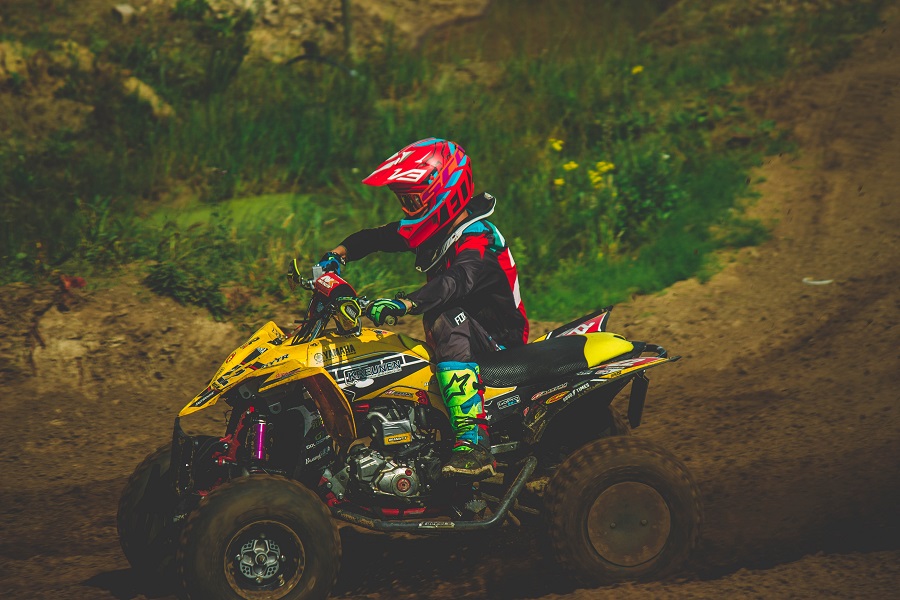
As a parent, sharing hobbies and passions such as ATVs and Powersports with your kids can be a great bonding experience. However, with the increasing popularity of ATV and UTV use in children, accidents and fatalities have also become more frequent.
But with the proper training, safety gear, and equipment, you can make your kids’ ATV riding experience both safe and enjoyable.
Reasons Why Riding ATVs Is A Good Hobby for Your Kids
Riding ATVs is a fun outdoor activity for the whole family. Kids can explore the great outdoors, get some fresh air and exercise, and learn to unplug and appreciate the wonders of nature.
Learning to drive an ATV also teaches kids the responsibility of driving so they can be better prepared when they’re old enough to get behind the wheel of a car.
Dangers of ATVs For Youth
Despite all the benefits kids can experience from riding ATVs, the activity can also be incredibly dangerous without the right precautions.
ATVs can reach high speeds and weigh over 300 kg (661 lbs). So when young people ride without the knowledge, strength, maturity, and good judgement to operate ATVs safely, they are at risk of injury.
The most common causes of ATV crashes among youth are:
- Driver error
- Judgement error
- Carrying a passenger
- Loss of control of the vehicle
Injuries are also more likely to happen when the manufacturer’s instructions are not followed when operating ATVs.
To avoid the dangers of ATVs, all ATV drivers should take an approved ATV safety training course.
Requirements for Children
Check your local age requirements for children riding ATVs. In some areas, children under the age of 14 must ride with adult supervision.
Keep in mind that there are smaller, lighter, and less powerful ATVs available for young riders that are easier to handle. Plus, every ATV model has an age and weight recommendation, so be sure to choose the right ATV for your kid based on their age, weight, and size.
When selecting an ATV for your child, remember that they should be able to grip the handlebars and touch the ground with their feet comfortably without stretching.
ATV Safety Tips & Rules for Kids
Here are some of the most important ATV safety tips for kids:
- Take an approved ATV safety training course.
- Wear the right safety gear—a DOT-compliant helmet, goggles, gloves, long sleeves, pants, and over-the-ankle boots. This safety gear protects riders from injuries if they get thrown from their ATVs.
- Use reflective gear, reflectors, lights, and flags to make the rider and ATV more visible.
- Do not ride a three-wheel ATV.
- Keep your hands and feet inside the vehicle.
- Always wear a seatbelt or harness—if available.
- Never ride on paved roads—except when crossing, permitted by law, and done safely. ATVs are designed for off-highway use, and riding on a highway could put the riders at risk of being hit by another vehicle.
- Do not allow your child to ride adult-sized ATVs. Only ride ATVs that are the right size for their body and age.
- Only ride on smooth, flat terrain—avoid dense trees, hills, and bodies of water, and only ride where you can see well into the distance.
- Ride only on designated trails and always at a safe speed.
- Never ride an ATV at night. Always ride in daylight with a full tank of gas and beware of the changing weather conditions to adjust your ride accordingly. Riding during the day improves visibility and safety for all riders.
- Riders under the age of 16 should always be supervised by an experienced adult when riding.
- Ride slowly with kids in front of adults.
- Supervising adults should also be well-trained and experienced riding ATVs.
- Never ride under the influence of drugs or alcohol.
- Have an emergency plan and an emergency kit, and know basic first aid to treat minor injuries.
- Youth should never ride with passengers.
Practice Tips
Along with taking an ATV safety training course, your kids can practice the following with the engine off, on a flat dirt or grass surface free of obstacles and distractions—such as other kids—and wearing the proper safety gear.
Let your kid get familiar mounting the ATV with the parking brake set. While on the ATV, they should always be looking forward, with their head up, both hands on the handlebars, and both feet on the footrests.
Braking
Slowly push the ATV forward while your kid operates the brakes. This exercise will help them learn how much pressure is needed to slow down and stop smoothly. Keep practicing until you are sure they have learned how to brake safely.
Throttle and Brakes
With the engine off, teach your rider the motions of smoothly moving the throttle to increase speed and releasing the throttle to decrease speed. They should also practice the motions of smoothly releasing the throttle and applying the brakes.
Turning
With the ATV stopped and the engine off, teach your kid proper turning technique—looking in the direction of the turn, turning the handlebars in the direction of the turn, and moving their body to the inside of the turn.
Practice turning in both directions until the movement becomes automatic.
Are ATVs Safe for Kids?
While there are dangers involved with riding, ATVs can be safe for kids when they are taught to understand the responsibility, risks, and safety tips for riding.
With proper training, practice, safety gear, and equipment, your kids will be better prepared to have fun with this hobby while staying safe.